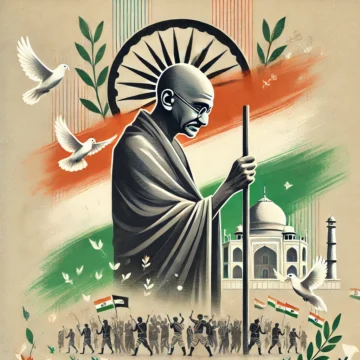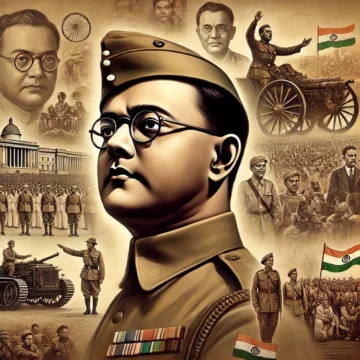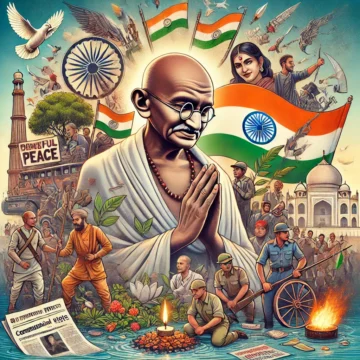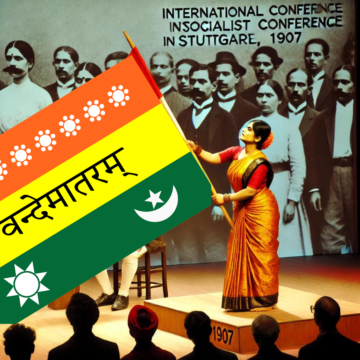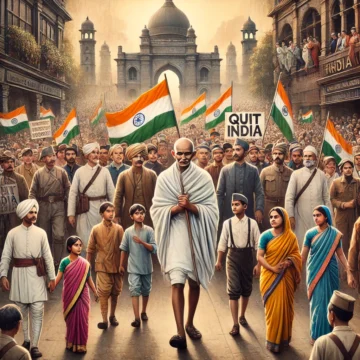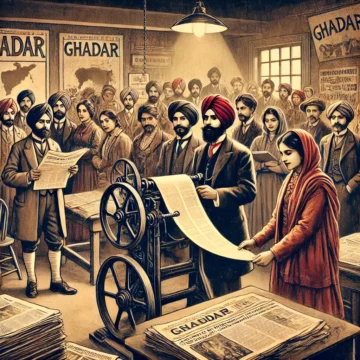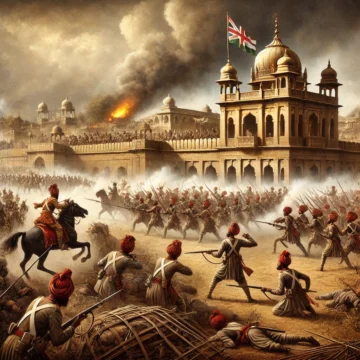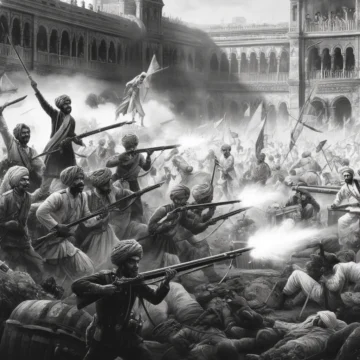Mahatma Gandhi and his legacy of nonviolent resistance and his philosophies of Ahimsa (nonviolence) and Satyagraha (passive resistance) are said to have shaped India's struggle for independence. While his principles remain influential, Gandhi’s leadership faced intense criticism, especially for his decisions and approach. This blog critically examines his impact, challenges, and controversies.
Tag: Indian independence
Subhas Chandra Bose: Born into a Storm – 1897
Subhas Chandra Bose, born during India's turbulent fight for independence, became a symbol of defiance against British rule. This blog traces his journey from a passionate student in Cuttack to the leader of the Indian National Army, exploring how his early life and ideological shifts shaped his radical approach to achieving freedom.
Royal Navy Revolt Mumbai: The Fire for Indian Independence
Exploring the pivotal Royal Navy Revolt Mumbai of 1945, this blog delves into the critical yet often overlooked catalyst that swayed India's struggle towards independence. Unlike popular belief, it wasn't solely Gandhi's non-violence but also this armed defiance that hastened the end of British rule in India.
Mahatma Gandhi and Nonviolence
Explore the complexities of Mahatma Gandhi's legacy in our detailed discussion on his principle of nonviolence and its modern-day implications. This blog delves into Gandhi's interpretations, historical actions, and their impacts on today's social and political movements, inviting readers to reflect on the dynamic nature of his enduring philosophies.
Mahatma Gandhi and His Principles Analyzed
Exploring Mahatma Gandhi's complex legacy, this blog dives into his reinterpretation of non-violence, political use of religious symbols, and strategies during the Indian independence movement. It critically examines how Gandhi's actions sometimes contradicted his ideals, particularly in his approaches to Hindu-Muslim unity and economic self-reliance, offering a nuanced perspective on his enduring impact.
Bhikhaiji Cama And First Indian Flag
Madam Bhikhaiji Cama, a profound figure in the Indian independence movement, made history on August 22, 1907, by unfurling what she presented as the first Indian flag at the International Socialist Conference in Stuttgart, symbolizing a unified struggle against imperialism and showcasing India's burgeoning demand for sovereignty.
Direct Action Day 1946 and Partition of India
Direct Action Day on August 16, 1946, profoundly reshaped the trajectory of India's independence, leading to Partition. The events, intended as peaceful, were marked by orchestrated violence against Hindus, exposing deep religious divides. This pivotal day set the course for creating Pakistan, igniting lasting impacts on regional and global stability.
India’s Freedom Struggle Efforts and Quit India Movement-III
In this detailed analysis, we explore the Quit India Movement of 1942—a pivotal uprising in India's fight for independence. Initiated by Gandhi amidst World War II pressures, this movement marked a drastic shift from previous resistance strategies, ushering a more direct confrontation against British rule and catalyzing a nationwide push for sovereignty.
India’s Freedom Struggle and Quit India Movement-II
Dive into the pivotal Civil Disobedience Movement of the 1930s in our comprehensive analysis. This segment examines the strategic shifts and public uprisings that challenged British colonial policies under Gandhi's controversial leadership, setting the stage for a more intensified push towards Indian independence.
India’s Freedom Struggle and Quit India Movement-I
This blog explores India's Freedom Struggle, emphasizing Gandhi's controversial leadership in movements like Non-Cooperation and Quit India. Despite widespread admiration, his strategies, marked by abrupt decisions and strategic recalibrations, played complex roles in shaping India's quest for independence, raising questions about the overall impact of his 33-year-long leadership.
Indian Freedom Struggle and Formation of Ghadar Party
Explore the Ghadar Party's foundational role in the Indian freedom struggle, established in 1913 by expatriates in San Francisco. This post delves into their radical approach to overthrow British rule, influenced by the discriminatory experiences faced by Indian immigrants in North America and their fierce desire to liberate their homeland.
Revolt 1857: Kanpur Seize and Satichaura Ghat Massacre
Welcome to HinduInfoPedia.org as we revisit the Siege and Massacre of Cawnpore during the 1857 Revolt. This week, we delve into these pivotal events that marked significant shifts in the First War of Indian Independence, deeply influencing anti-colonial sentiments and shaping the resistance against British rule. Join us as we explore the impact and legacy of these historical upheavals.
Nana Saheb: A Crucial Figure in 1857 Rebellion
Nana Saheb, born Dhondu Pant on May 19, 1824, was a pivotal leader in the Indian Rebellion of 1857. Raised in Bithur near Kanpur, he opposed British policies, particularly the Doctrine of Lapse, which denied him his pension and estate. His leadership included the capture and siege of Kanpur and alliances with Tatya Tope and Rani Lakshmi Bai. Despite Kanpur's fall and his retreat to Nepal, Nana Saheb remains a symbol of resistance against British rule. His legacy is commemorated through cultural references, memorials, and educational curricula in contemporary India.
Indian Independence and Mutiny in India 1857
The mutiny in India in 1857, recognized as the First War of Indian Independence, marked a significant point in history. This upheaval began in Meerut, fueled by the British imposition of the Enfield P-53 rifle cartridges, rumored to be greased with cow and pig fat, offending both Hindu and Muslim soldiers. The rebellion quickly escalated when 85 sepoys, punished for their refusal to use these cartridges, sparked widespread mutiny. Liberating their comrades and killing their British officers, they advanced towards Delhi, declaring the Mughal emperor as their leader and catalyzing other regions to join the resistance. This event not only challenged colonial rule but also united diverse sections of Indian society in a fight for sovereignty, laying foundational principles for future struggles for freedom.


